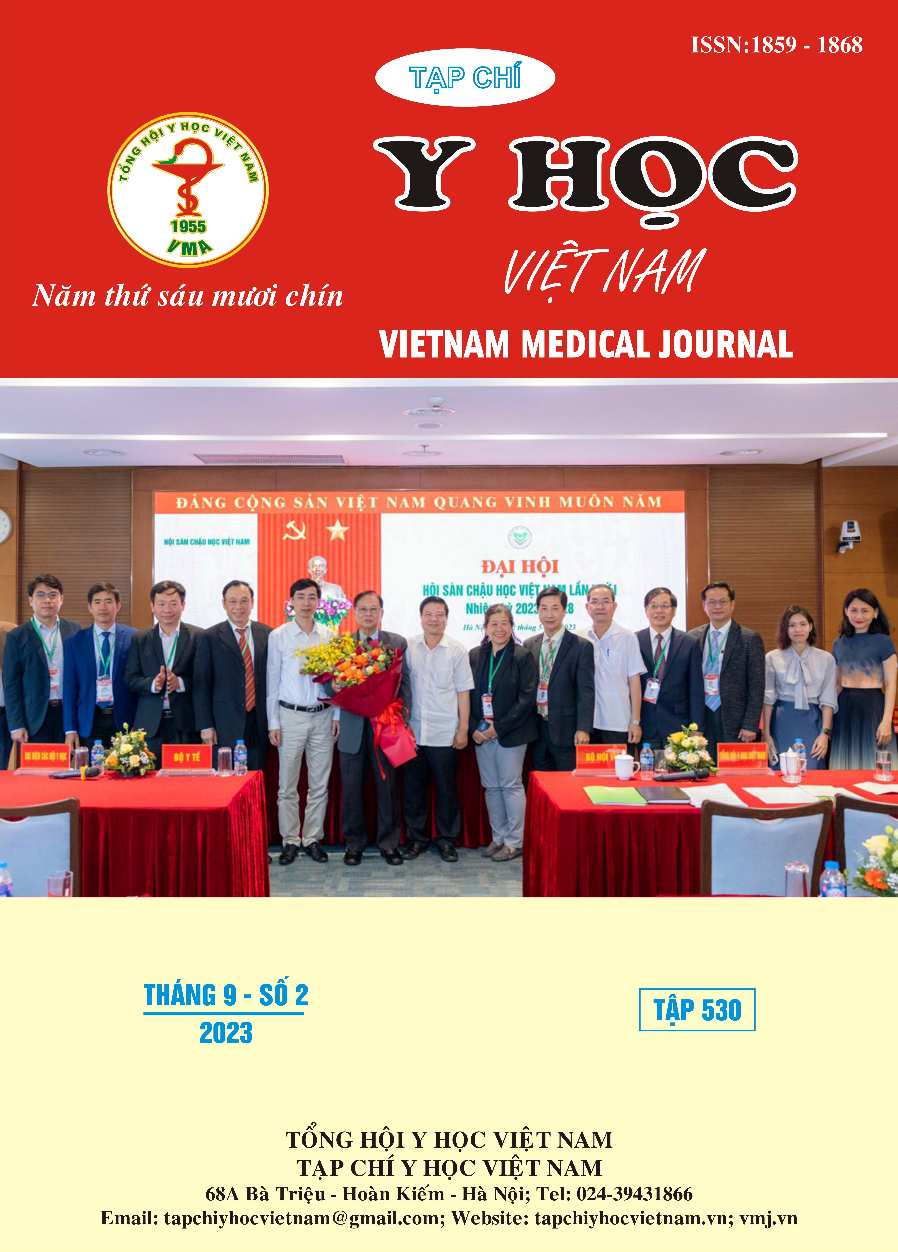A STUDY ASSESSING THE RELATIONSHIP BETWEEN TUMOR BUDDING AND HISTOPATHOLOGICAL FEATURES IN GASTRIC CANCER
Main Article Content
Abstract
Objectives: to determine the rate of tumor budding in gastric carcinoma patients and evaluate its relationship with certain general and histopathological characteristics. Subjects and methods: a retrospective, cross-sectional study that included 87 patients diagnosed with gastric cancer at 103 Military Hospital from January 2020 to March 2023. The histopathological characteristics were examined, and the collected data was analyzed to determine the association between the obtained indicators. Results: The majority of tumors were tubular-papillary carcinoma (49.43%) and had moderate to low differentiation (85.06%). Lauren intestinal carcinoma was the most common type. Most of the subjects exhibited tumor cells that had infiltrated the muscular layer (pT2), and 42.53% displayed metastasis in the lymph nodes. The occurrence of vascular and neurological invasion was infrequent. Furthermore, a significant proportion of cases demonstrated high-grade tumor budding (51.72%). A statistically significant association was found between high-grade tumor budding and characteristics of poorly cohesive carcinoma and poorly differentiated carcinoma (WHO 2019), high degree of pT invasiveness, low differentiation, and potential for lymph node metastasis of tumor cells. Conclusion: Tumor budding is a microscopic feature that has prognostic value in assessing invasion and metastasis in gastric cancer. This study highlights the importance of evaluating tumor budding in gastric cancer patients to help predict disease progression and determine appropriate treatment strategies.
Article Details
Keywords
gastric carcinoma, tumor budding.
References
2. Lugli A, Kirsch R, Ajioka Y, et al (2017). Recommendations for reporting tumor budding in colorectal cancer based on the International Tumor Budding Consensus Conference (ITBCC) 2016. Modern pathology, 30(9), 1299-1311.
3. Ulase D, Heckl S, Behrens H.M et al. (2020). Prognostic significance of tumor budding assessed in gastric carcinoma according to the criteria of the International Tumor Budding Consensus Conference. Histopathology, 76(3), 433-446.
4. Kemi, N. et al. (2019). Gastric adenocarcinoma: Tumor Budding Subtypes and their Prognostic Influence on Outcome in a Nigerian Tertiary Hospital. Journal of Cancer Epidemiology.
5. Lương Việt Bằng. (2019). Tumor characteristics and histology subtype of gastric adenocarcinoma in Vietnamese population. Journal of Pathology and Translational Medicine, 53(4), 232-238.
6. Gulluoglu M, Yegen G, Ozluk Y et al. (2015). Tumor budding is independently predictive for lymph node involvement in early gastric cancer. International journal of surgical pathology, 23(5), 349-358.
7. Đào Văn Từ, Nguyễn Văn Chu, Nguyễn Tiến Quang và cộng sự. (2020). Evaluation of tumor budding in predicting survival for gastric carcinoma patients in Vietnam. Cancer Control, 27(1).
8. Szalai L, Jakab Á, Kocsmár I et al. (2022). Prognostic Ability of Tumor Budding Outperforms Poorly Differentiated Clusters in Gastric Cancer. Cancers, 14(19), 4731.


